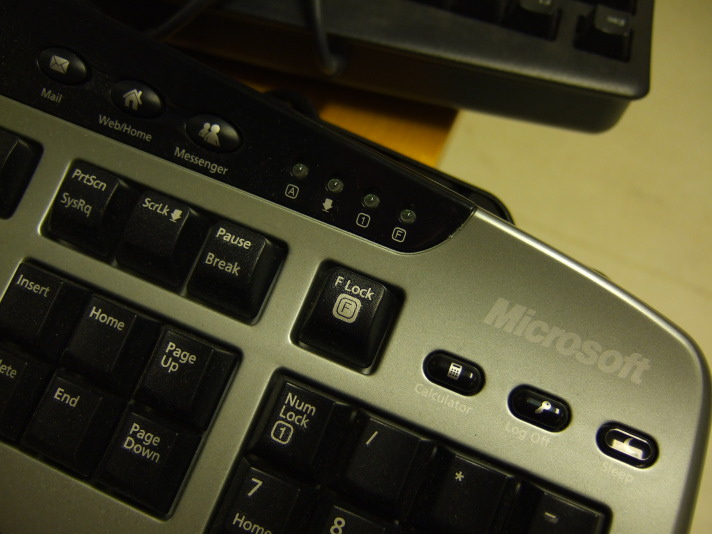I seem to be spending too much time looking into obscure tales from computing history, but continuing an earlier tangent from a recent article, noting the performance of different computer systems at the end of the 1980s and the start of the 1990s, I found myself evaluating one of those Internet rumours that probably started to do the rounds about thirty years ago. We will get to that rumour – a tall tale, indeed – in a moment. But first, a chart that I posted in an earlier article:

Performance evolution of the Archimedes and various competitors
As this nice chart indicates, comparing processor performance in computers from Acorn, Apple, Commodore and Compaq, different processor families bestowed a competitive advantage on particular systems at various points in time. For a while, Acorn’s ARM2 processor gave Acorn’s Archimedes range the edge over much more expensive systems using the Intel 80386, showcased in Compaq’s top-of-the-line models, as well as offerings from Apple and Commodore, these relying on Motorola’s 68000 family. One can, in fact, claim that a comparison between ARM-based systems and 80386-based systems would have been unfair to Acorn: more similarly priced systems from PC-compatible vendors would have used the much slower 80286, making the impact of the ARM2 even more remarkable.
Something might be said about the evolution of these processor families, what happened after 1993, and the introduction of later products. Such topics are difficult to address adequately for a number of reasons, principally the absence of appropriate benchmark results and the evolution of benchmarking to more accurately reflect system performance. Acorn never published SPEC benchmark figures, nor did ARM (at the time, at least), and any given benchmark as an approximation to “real-world” computing activities inevitably drifts away from being an accurate approximation as computer system architecture evolves.
However, in another chart I made to cover Acorn’s Unix-based RISC iX workstations, we can consider another range of competitors and quite a different situation. (This chart also shows off the nice labelling support in gnuplot that wasn’t possible with the currently disabled MediaWiki graph extension.)

Performance of the Acorn R-series and various competitors in approximate chronological order of introduction: a chart produced by gnuplot and converted from SVG to PNG for Wikipedia usage.
Now, this chart only takes us from 1989 until 1992, which will not satisfy anyone wondering what happened next in the processor wars. But it shows the limits of Acorn’s ability to enter the lucrative Unix workstation market with a processor that was perceived to be rather fast in the world of personal computers. Acorn’s R140 used the same ARM2 processor introduced in the Archimedes range, but even at launch this workstation proved to be considerably slower than somewhat more expensive workstation models from Digital and Sun employing MIPS and SPARC processors respectively.
Fortunately for Acorn, adding a cache to the ARM2 (plus a few other things) to make the ARM3 unlocked a considerable boost in performance. Although the efficient utilisation of available memory bandwidth had apparently been a virtue for the ARM designers, coupling the processor to memory performance had put a severe limit on overall performance. Meanwhile, the designers of the MIPS and SPARC processor families had started out with a different perspective and had considered cache memory almost essential in the kind of computer architectures that would be using these processors.
Acorn didn’t make another Unix workstation after the R260, released in 1990, for reasons that could be explored in depth another time. One of them, however, was that ARM processor design had been spun out to a separate company, ARM Limited, and appeared to be stalling in terms of delivering performance improvements at the same rate as previously, or indeed at the same rate as other processor families. Acorn did introduce the ARM610 belatedly in 1994 in its Risc PC, which would have been more amenable to running Unix, but by then the company was arguably beginning the process of unravelling for another set of reasons to be explored another time.
So, That Tall Tale
It is against this backdrop of competitive considerations that I now bring you the tall tale to which I referred. Having been reminded of the Atari Transputer Workstation by a video about the Transputer – another fascinating topic and thus another rabbit hole to explore – I found myself investigating Atari’s other workstation product: a Unix workstation based on the Motorola 68030 known as the Atari TT030 or TT/X, augmenting the general Atari TT product with the Unix System V operating system.
On the chart above, a 68030-based system would sit at a similar performance level to Acorn’s R140, so ignoring aspirational sentiments about “high-end” performance and concentrating on a price of around $3000 (with a Unix licence probably adding to that figure), there were some hopes that Atari’s product would reach a broad audience:
As a UNIX platform, the affordable TT030 may leapfrog machines from IBM, Apple, NeXT, and Sun, as the best choice for mass installation of UNIX systems in these environments.
As it turned out, Atari released the TT without Unix in 1990 and only eventually shipped a Unix implementation in around 1992, discontinuing the endeavour not long afterwards. But the tall tale is not about Atari: it is about their rivals at Commodore and some bizarre claims that seem to have drifted around the Internet for thirty years.
Like Atari and Acorn, Commodore also had designs on the Unix workstation market. And like Atari, Commodore had a range of microcomputers, the Amiga series, based on the 68000 processor family. So, the natural progression for Commodore was to design a model of the Amiga to run Unix, eventually giving us the Amiga 3000UX, priced from around $5000, running an implementation of Unix System V Release 4 branded as “Amiga Unix”.
Reactions from the workstation market were initially enthusiastic but later somewhat tepid. Commodore’s product, although delivered in a much more timely fashion than Atari’s, will also have found itself sitting at a similar performance level to Acorn’s R140 but positioned chronologically amongst the group including Acorn’s much faster R260 and the 80486-based models. It goes without saying that Atari’s eventual product would have been surrounded by performance giants by the time customers could run Unix on it, demonstrating the need to bring products to market on time.
So what is this tall tale, then? Well, it revolves around this not entirely coherent remark, entered by some random person twenty-one years ago on the emerging resource known as Wikipedia:
The Amiga A3000UX model even got the attention of Sun Microsystems, but unfortunately Commodore did not jump at the A3000UX.
If you search the Web for this, including the Internet Archive, the most you will learn is that Sun Microsystems were supposedly interested in adopting the Amiga 3000UX as a low-cost workstation. But the basis of every report of this supposed interest always seems to involve “talk” about a “deal” and possibly “interest” from unspecified “people” at Sun Microsystems. And, of course, the lack of any eventual deal is often blamed on Commodore’s management and perennial villain of the Amiga scene…
There were talks of Sun Microsystems selling Amiga Unix machines (the prototype Amiga 3500) as a low-end Unix workstations under their brand, making Commodore their OEM manufacturer. This deal was let down by Commodore’s Mehdi Ali, not once but twice and finally Sun gave up their interest.
Of course, back in 2003, anything went on Wikipedia. People thought “I know this!” or “I heard something about this!”, clicked the edit link, and scrawled away, leaving people to tidy up the mess two decades later. So, I assume that this tall tale is just the usual enthusiast community phenomenon of believing that a favourite product could really have been a contender, that legitimacy could have been bestowed on their platform, and that their favourite company could have regained some of its faded glory. Similar things happened as Acorn went into decline, too.
Picking It All Apart
When such tales appeal to both intuition and even-handed consideration, they tend to retain a veneer of credibility: of being plausible and therefore possibly true. I cannot really say whether the tale is actually true, only that there is no credible evidence of it being true. However, it is still worth evaluating the details within such tales on their merits and determine whether the substance really sounds particularly likely at all.
So, why would Sun Microsystems be interested in a Commodore workstation product? Here, it helps to review Sun’s own product range during the 1980s, to note that Sun had based its original workstation on the Motorola 68000 and had eventually worked up the 68000 family to the 68030 in its Sun-3 products. Indeed, the final Sun-3 products were launched in 1989, not too long before the Amiga 3000UX came to market. But the crucial word in the previous sentence is “final”: Sun had adopted the SPARC processor family and had started introducing SPARC-based models two years previously. Like other workstation vendors, Sun had started to abandon Motorola’s processors, seeking better performance elsewhere.
A June 1989 review in Personal Workstation magazine is informative, featuring the 68030-based Sun 3/80 workstation alongside Sun’s SPARCstation 1. For diskless machines, the Sun 3/80 came in at around $6000 whereas the SPARCstation 1 came in at around $9000. For that extra $3000, the buyer was probably getting around four times the performance, and it was quite an incentive for Sun’s customers and developers to migrate to SPARC on that basis alone. But even for customers holding on to their older machines and wanting to augment their collection with some newer models, Sun was offering something not far off the “low-cost” price of an Amiga 3000UX with hardware that was probably more optimised for the role.
Sun will have supported customers using these Sun-3 models for as long as support for SunOS was available, eventually introducing Solaris which dropped support for the 68000 family architecture entirely. Just like other Unix hardware vendors, once a transition to various RISC architectures had been embarked upon, there was little enthusiasm for going back and retooling to support the Motorola architecture again. And, after years resisting, even Motorola was embracing RISC with its 88000 architecture, tempting companies like NeXT and Apple to consider trading up from the 68000 family: an adventure that deserves its own treatment, too.
So, under what circumstances would Sun have seriously considered adopting Commodore’s product? On the face of it, the potential compatibility sounds enticing, and Commodore will have undoubtedly asserted that they had experience at producing low-cost machines in volume, appealing to Sun’s estimate, expressed in the Personal Workstation review, that the customer base for a low-cost workstation would double for every $1000 drop in price. And surely Sun would have been eager to close the doors on manufacturing a product line that was going to be phased out sooner or later, so why not let Commodore keep making low-cost models to satisfy existing customers?
First of all, we might well doubt any claims to be able to produce workstations significantly cheaper than those already available. The Amiga 3000UX was, as noted, only $1000 or so cheaper than the Sun 3/80. Admittedly, it had a hard drive as standard, making the comparison slightly unfair, but then the Sun 3/80 was around already in 1989, meaning that to be fair to that product, we would need to see how far its pricing will have fallen by the time the Amiga 3000UX became available. Commodore certainly had experience in shipping large volumes of relatively inexpensive computers like the Amiga 500, but they were not shipping workstation-class machines in large quantities, and the eventual price of the Amiga 3000UX indicates that such arguments about volume do not automatically confer low cost onto more expensive products.
Even if we imagine that the Amiga 3000UX had been successfully cost-reduced and made more competitive, we then need to ask what benefits there would have been for the customer, for developers, and for Sun in selling such a product. It seems plausible to imagine customers with substantial investments in software that only ran on Sun’s older machines, who might have needed newer, compatible hardware to keep that software running. Perhaps, in such cases, the suppliers of such software were not interested or capable of porting the software to the SPARC processor family. Those customers might have kept buying machines to replace old ones or to increase the number of “seats” in their environment.
But then again, we could imagine that such customers, having multiple machines and presumably having them networked together, could have benefited from augmenting their old Motorola machines with new SPARC ones, potentially allowing the SPARC machines to run a suitable desktop environment and to use the old applications over the network. In such a scenario, the faster SPARC machines would have been far preferable as workstations, and with the emergence of the X Window System, a still lower-cost alternative would have been to acquire X terminals instead.
We might also question how many software developers would have been willing to abandon their users on an old architecture when it had been clear for some time that Sun would be transitioning to SPARC. Indeed, by producing versions of the same operating system for both architectures, one can argue that Sun was making it relatively straightforward for software vendors to prepare for future products and the eventual deprecation of their old products. Moreover, given the performance benefits of Sun’s newer hardware, developers might well have been eager to complete their own transition to SPARC and to entice customers to follow rapidly, if such enticement was even necessary.
Consequently, if there were customers stuck on Sun’s older hardware running applications that had been effectively abandoned, one could be left wondering what the scale of the commercial opportunity was in selling those customers more of the same. From a purely cynical perspective, given the idiosyncracies of Sun’s software platform from time to time, it is quite possible that such customers would have struggled to migrate to another 68000 family Unix platform. And even without such portability issues and with the chance of running binaries on a competing Unix, the departure of many workstation vendors to other architectures may have left relatively few appealing options. The most palatable outcome might have been to migrate to other applications instead and to then look at the hardware situation with fresh eyes.
And we keep needing to return to that matter of performance. A 68030-based machine was arguably unappealing, like 80386-based systems, clearing the bar for workstation computing but not by much. If the cost of such a machine could have been reduced to an absurdly low price point then one could have argued that it might have provided an accessible entry point for users into a vendor’s “ecosystem”. Indeed, I think that companies like Commodore and Acorn should have put Unix-like technology in their low-end products, harmonising them with higher-end products actually running Unix, and having their customers gradually migrate as more powerful computers became cheaper.
But for workstations running what one commentator called “wedding-cake configurations” of the X Window System, graphical user interface toolkits, and applications, processors like the 68030, 80386 and ARM2 were going to provide a disappointing experience whatever the price. Meanwhile, Sun’s existing workstations were a mature product with established peripherals and accessories. Any cost-reduced workstation would have been something distinct from those existing products, impaired in performance terms and yet unable to make use of things like graphics accelerators which might have made the experience tolerable.
That then raises the question of the availability of the 68040. Could Commodore have boosted the Amiga 3000UX with that processor, bringing it up to speed with the likes of the ARM3-based R260 and 80486-based products, along with the venerable MIPS R2000 and early SPARC processors? Here, we can certainly answer in the affirmative, but then we must ask what this would have done to the price. The 68040 was a new product, arriving during 1990, and although competitively priced relative to the SPARC and 80486, it was still quoted at around $800 per unit, featuring in Apple’s Macintosh range in models that initially, in 1991, cost over $5000. Such a cost increase would have made it hard to drive down the system price.
In the chart above, the HP 9000/425t represents possibly the peak of 68040 workstation performance – “a formidable entry-level system” – costing upwards of $9000. But as workstation performance progressed, represented by new generations of DECstations and SPARCstations, the 68040 stalled, unable to be clocked significantly faster or otherwise see its performance scaled up. Prominent users such as Apple jumped ship and adopted PowerPC along with Motorola themselves! Motorola returned to the architecture after abandoning further development of the 88000 architecture, delivering the 68060 before finally consigning the architecture to the embedded realm.
In the end, even if a competitively priced and competitively performing workstation had been deliverable by Commodore, would it have been in Sun’s interests to sell it? Compatibility with older software might have demanded the continued development of SunOS and the extension of support for older software technologies. SunOS might have needed porting to Commodore’s hardware, or if Sun were content to allow Commodore to add any necessary provision to its own Unix implementation, then porting of those special Sun technologies would have been required. One can question whether the customer experience would have been satisfactory in either case. And for Sun, the burden of prolonging the lifespan of products that were no longer the focus of the company might have made the exercise rather unattractive.
Companies can always choose for themselves how much support they might extend to their different ranges of products. Hewlett-Packard maintained several lines of workstation products and continued to maintain a line of 68030 and 68040 workstations even after introducing their own PA-RISC processor architecture. After acquiring Apollo Computer, who had also begun to transition to their own RISC architecture from the 68000 family, HP arguably had an obligation to Apollo’s customers and thus renewed their commitment to the Motorola architecture, particularly since Apollo’s own RISC architecture, PRISM, was shelved by HP in favour of PA-RISC.
It is perhaps in the adoption of Sun technology that we might establish the essence of this tale. Amiga Unix was provided with Sun’s OPEN LOOK graphical user interface, and this might have given people reason to believe that there was some kind of deeper alliance. In fact, the alliance was really between Sun and AT&T, attempting to define Unix standards and enlisting the support of Unix suppliers. In seeking to adhere most closely to what could be regarded as traditional Unix – that defined by its originator, AT&T – Commodore may well have been picking technologies that also happened to be developed by Sun.
This tale rests on the assumption that Sun was not able to drive down the prices of its own workstations and that Commodore was needed to lead the way. Yet workstation prices were already being driven down by competition. Already by May 1990, Sun had announced the diskless SPARCstation SPC at the magic $5000 price point, although its lowest-cost colour workstation was reportedly the SPARCstation IPC at a much more substantial $10000. Nevertheless, its competitors were quite able to demonstrate colour workstations at reasonable prices, and eventually Sun followed their lead. Meanwhile, the Amiga 3000UX cost almost $8000 when coupled with a colour monitor.
With such talk of commodity hardware, it must not be forgotten that Sun was not without other options. For example, the company had already delivered SunOS on the Sun386i workstation in 1988. Although rather expensive, costing $10000, and not exactly a generic PC clone, it did support PC architecture standards. This arguably showed the way if the company were to target a genuine commodity hardware platform, and eventually Sun followed this path when making its Solaris operating system available for the Intel x86 architecture. But had Sun had a desperate urge to target commodity hardware back in 1990, partnering with a PC clone manufacturer would have been a more viable option than repurposing an Amiga model. That clone manufacturer could have been Commodore, too, but other choices would have been more convincing.
Conclusions and Reflections
What can we make of all of this? An idle assertion with a veneer of plausibility and a hint of glory denied through the notoriously poor business practices of the usual suspects. Well, we can obviously see that nothing is ever as simple as it might seem, particularly if we indulge every last argument and pursue every last avenue of consideration. And yet, the matter of Commodore making a Unix workstation and Sun Microsystems being “interested in rebadging the A3000UX” might be as simple as imagining a rather short meeting where Commodore representatives present this opportunity and Sun’s representatives firmly but politely respond that the door has been closed on a product range not long for retirement. Thanks but no thanks. The industry has moved on. Did you not get that memo?
Given that there is the essence of a good story in all of this, I consulted what might be the first port of call for Commodore stories: David Pleasance’s book, “Commodore The Inside Story”. Sadly, I can find no trace of any such interaction, with Unix references relating to a much earlier era and Commodore’s Z8000-based Unix machine, the unreleased Commodore 900. Yet, had such a bungled deal occurred, I am fairly sure that this book would lay out the fiasco in plenty of detail. Even Dave Haynie’s chapter, which covers development of the Amiga 3000 and subsequent projects, fails to mention any such dealings. Perhaps the catalogue of mishaps at Commodore is so extensive that a lucrative agreement with one of the most prominent corporations in 1990s computing does not merit a mention.
Interestingly, the idea of a low-cost but relatively low-performance 68030-based workstation from a major Unix workstation vendor did arrive in 1989 in the form of the Apollo DN2500, costing $4000, from Hewlett-Packard. Later on, Commodore would apparently collaborate with HP on chipset development, with this being curtailed by Commodore’s bankruptcy. Commodore were finally moving off the 68000 family architecture themselves, all rather too late to turn their fortunes around. Did Sun need a competitive 68040-based workstation? Although HP’s 9000/425 range was amongst the top sellers, Sun was doing nicely enough with its SPARC-based products, shipping over twice as many workstations as HP.
While I consider this tall tale to be nothing more than folklore, like the reminiscences of football supporters whose team always had a shot at promotion to the bigger league every season, “not once but twice” has a specificity that either suggests a kernel of truth or is a clever embellishment to sustain a group’s collective belief in something that never was. Should anyone know the real story, please point us to the documentation. Or, if there never was any paper trail but you happened to be there, please write it up and let us all know. But please don’t just go onto Wikipedia and scrawl it in the tradition of “I know this!”
For the record, I did look around to see if anyone recorded such corporate interactions on Sun’s side. That yielded no evidence, but I did find something else that was rather intriguing: hints that Sun may have been advised to try and acquire Acorn or ARM. Nothing came from that, of course, but at least this is documentation of an interaction in the corporate world. Of stories about something that never happened, it might also be a more interesting one than the Commodore workstation that Sun never got to rebadge.
Update: I did find a mention of Sun Microsystems and Unix International featuring the Amiga 3000UX on their exhibition stands at the Uniforum conference in early 1991. As noted above, Sun had an interest in promoting adoption of OPEN LOOK, and Unix International – the Sun/AT&T initiative to define Unix standards – had an interest in promoting System V Release 4 and, to an extent, OPEN LOOK. So, while the model may have “even got the attention of Sun Microsystems”, it was probably just a nice way of demonstrating vendor endorsement of Sun’s technology from a vendor who admitted that what it could offer was not “competitive with Sun” and what it had to offer.
Another update: My attention was brought to an article by “datagubben” Carl Svensson entitled “The Amiga 3000 UNIX and Sun Microsystems: Deal or no deal?”. It is worth reading for an independent view of the same tall tale, but with some effort made to contact people who might have been familiar with the events concerned. I had to follow up with Carl over one observation he made about the UnixWorld review cited in the Amiga Unix article on Wikipedia:
“The Sparcstation IPC model referenced in the review was launched at $9,995 in 1990, and it seems unlikely to have dropped a full $3,000 – almost a third of its original price – in a mere year.”
Unlikely as it may seem, Sun did indeed make substantial price cuts during 1991. In a highly competitive market, with DEC introducing DECstation models at attractive prices and IBM making an entrance with its RS/6000 range, including low-end models, Sun had to discount existing models and to introduce new ones to keep up. The workstation market was certainly not a place where easy money could be made by just showing up, particularly by a company like Commodore with far fewer resources than the corporations already engaged in such intense competition.







